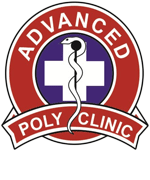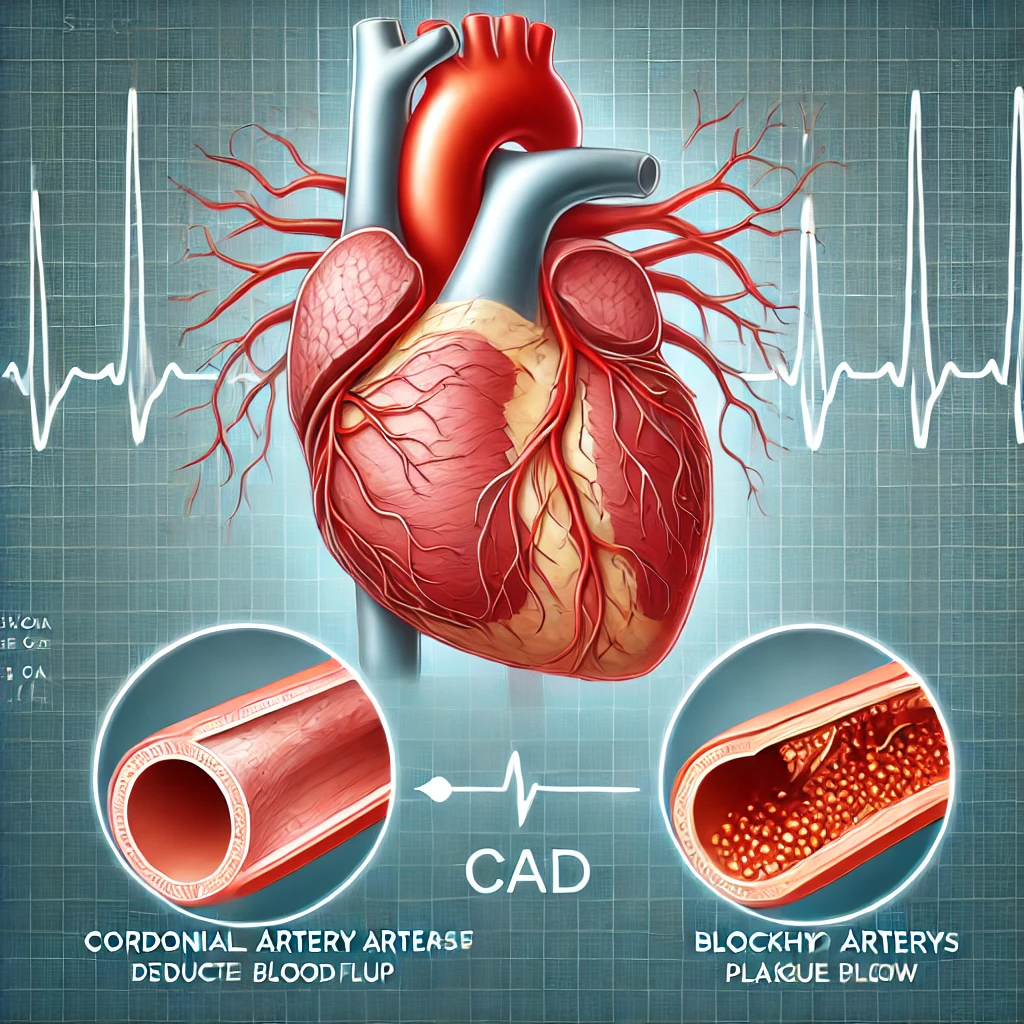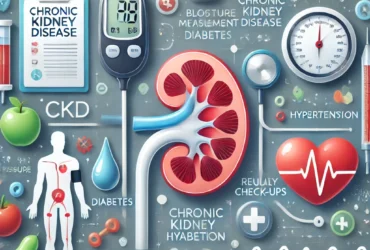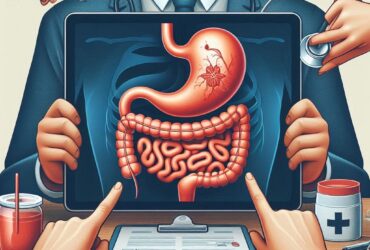What is Heart Disease?
Heart disease, specifically Coronary Artery Disease (CAD), is a condition where the blood vessels that supply the heart (coronary arteries) become narrowed or blocked due to the buildup of plaque (a combination of fat, cholesterol, and other substances). This reduces blood flow to the heart, increasing the risk of heart attacks and other cardiovascular complications.
Changing Trends in CAD
While CAD was predominantly observed in developed countries three decades ago, its prevalence has surged in developing nations like Nepal, now even surpassing some developed regions. Alarmingly, an increasing number of young individuals in Nepal are experiencing fatal heart attacks each year, underscoring the need for urgent awareness and preventive measures.
Causes and Risk Factors
CAD develops gradually over time and is influenced by several factors:
Modifiable Risk Factors (Can Be Controlled)
- High blood pressure (Hypertension)
- High cholesterol levels (LDL – “bad” cholesterol)
- Smoking
- Obesity and overweight
- Unhealthy diet (high in saturated fats, trans fats, and sugar)
- Lack of physical activity
- Diabetes and insulin resistance
- Excessive alcohol consumption
- Chronic stress and anxiety
Non-Modifiable Risk Factors (Cannot Be Controlled)
- Age (risk increases with age, especially after 45 for men and 55 for women)
- Family history of heart disease
- Gender (men are at higher risk, but postmenopausal women also have an increased risk)
- Genetic predisposition
Symptoms of Coronary Artery Disease
Symptoms vary depending on the severity of blockage but may include:
- Chest pain (angina): A squeezing, pressure-like discomfort, especially during physical activity or stress.
- Shortness of breath: Occurs when the heart struggles to pump enough blood.
- Fatigue: Feeling unusually tired, especially during exertion.
- Dizziness or lightheadedness: Due to reduced blood flow to the brain.
- Heart palpitations: Irregular or fast heartbeat.
- Pain in arms, neck, jaw, or back: Sometimes felt instead of chest pain.
- Silent heart attacks: Some people, especially diabetics, may experience a heart attack with minimal or no symptoms.
Diagnosis and Tests
A doctor may use several tests to diagnose CAD:
- Electrocardiogram (ECG): Records the electrical activity of the heart.
- Echocardiogram: Uses ultrasound to assess heart function.
- Stress test (TMT): Monitors heart activity during physical exertion- the only test that can predict heart attack in future and saves life. TMT is a must every year to prevent heart attack and death.
- Coronary angiography: Uses dye and X-rays to visualize blockages in the coronary arteries. This is recommended if TMT is positive.
- CT Coronary Angiography (CTA): A non-invasive imaging test for detecting blockages. When TMT is inconclusive, and chances of CAD is 50/50 specially in younger patients- then CT angiography is recommended to screen CAD, because of its non-invasive safe procedure.
- Blood tests: Check for high cholesterol, blood sugar, and inflammation markers.
Treatment and Management
Managing CAD involves lifestyle changes, medications, and sometimes medical procedures.
Lifestyle Modifications:
- Healthy diet: Eat more fruits, vegetables, whole grains, and lean proteins. Limit salt, sugar, and unhealthy fats.
- Regular exercise: At least 30 minutes of moderate exercise (like brisk walking) most days of the week.
- Quit smoking: Reduces plaque buildup and improves overall heart health.
- Maintain a healthy weight: Helps lower blood pressure, cholesterol, and diabetes risk.
- Manage stress: Meditation, deep breathing exercises, and adequate sleep can help reduce stress.
Medications:
- Statins: Lower LDL cholesterol.
- Aspirin or blood thinners: Reduce the risk of blood clots.
- Beta-blockers: Slow the heart rate and lower blood pressure.
- ACE inhibitors or ARBs: Help relax blood vessels.
- Nitrates: Help relieve angina symptoms.
Medical Procedures:
- Angioplasty and Stent Placement: A minimally invasive procedure to open blocked arteries.
- Coronary Artery Bypass Graft (CABG) Surgery: A surgery that uses healthy blood vessels to bypass blocked arteries.
- Pacemaker or Defibrillator: In cases of irregular heartbeats.
Complications of Untreated CAD
If left untreated, CAD can lead to serious health conditions, such as:
- Heart Attack (Myocardial Infarction): Complete blockage of blood flow to the heart muscle. Death.
- Heart Failure: The heart becomes too weak to pump blood efficiently.
- Arrhythmias: Irregular heartbeats that can be life-threatening.
- Stroke: Reduced blood supply to the brain due to blocked arteries.
Prevention Tips
While some risk factors cannot be controlled, adopting a heart-healthy lifestyle can significantly reduce the risk:
- Eat a balanced diet and limit processed foods.
- Exercise regularly and stay physically active.
- Maintain a healthy weight.
- Control blood pressure, cholesterol, and diabetes.
- Avoid smoking and excessive alcohol consumption.
- Manage stress through relaxation techniques.
- Get regular health check-ups to monitor risk factors.
When to See a Doctor
Seek medical attention if you experience:
- Chest tightness, heaviness, discomfort on physical exertion like walking uphill or climbing stairs, that disappears in rest – known as Angina on exertion.
- Severe or persistent chest pain.
- Shortness of breath that worsens over time.
- Unexplained fatigue, dizziness, or fainting.
- Symptoms of a heart attack (chest pain, nausea, sweating, pain radiating to the arm or jaw).
FAQs
Q: Can heart disease be reversed?
A: While damage to the arteries cannot always be undone, lifestyle changes, medications, and treatments can slow progression and improve heart health.
Q: How often should I get screened for heart disease?
A: If you have risk factors, regular check-ups are recommended annually or as advised by your doctor.
Q: Is coronary artery disease the same as a heart attack?
A: No, CAD is the narrowing of arteries, while a heart attack occurs when an artery is completely blocked, cutting off blood supply to the heart.
Q: Is all chest pain is serious?
A: No, CAD is usually associated with chest pain, discomfort during physical exertion and disappears while resting. If you have chest pain while resting, but its unnoticed while walking, climbing stairs then most likely its chest pain not related to heart or CAD (Non-cardiac chest pain.
For expert consultation and heart disease management, book an appointment at our clinic today.
📞 01-4531078 or 01-4543386






